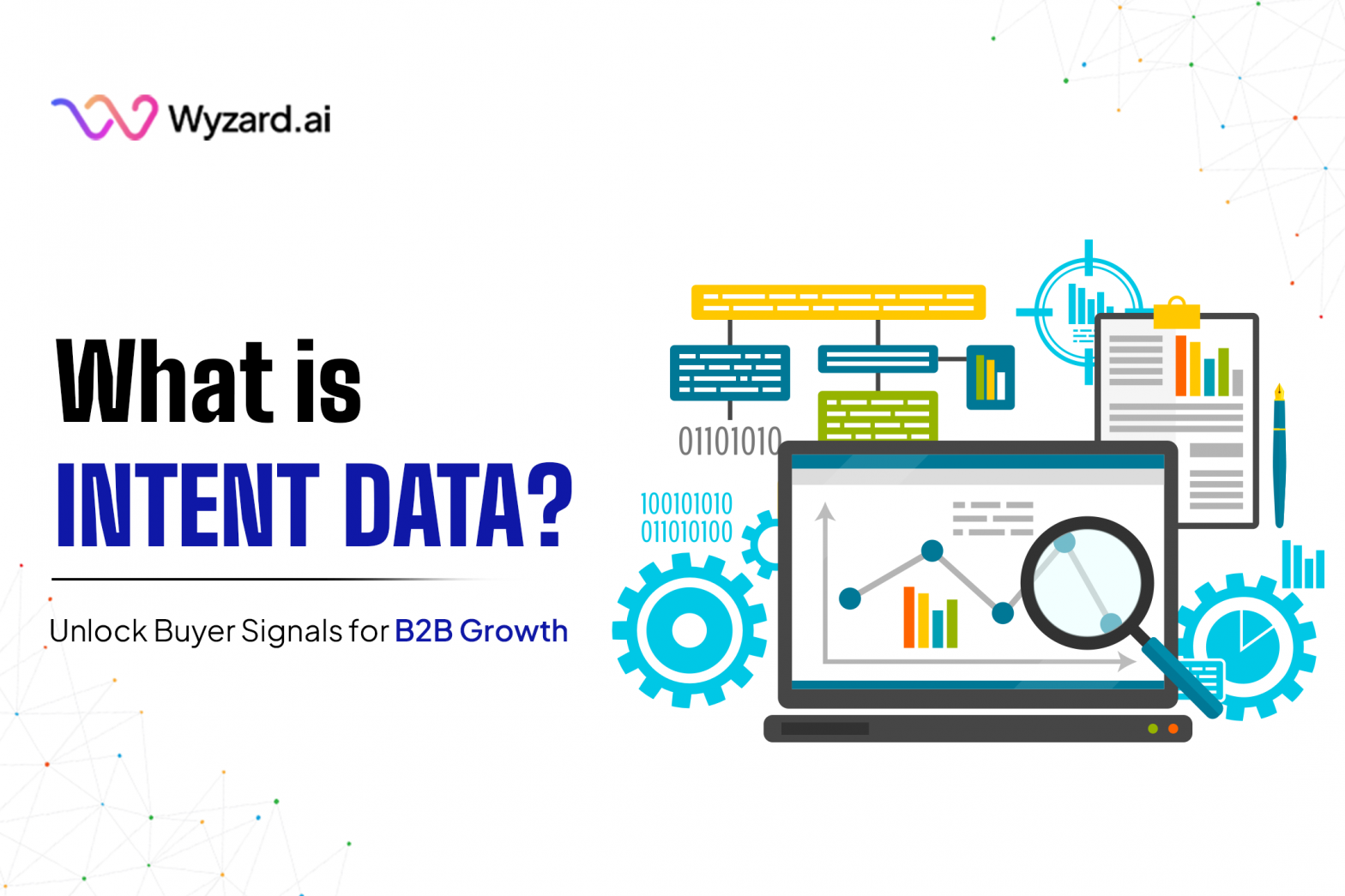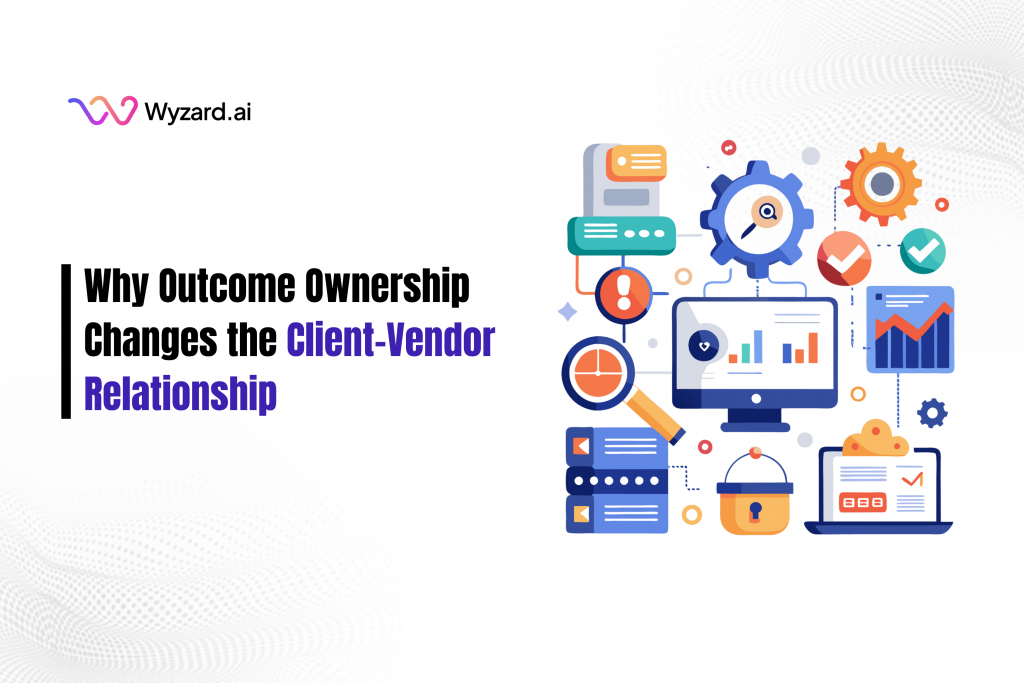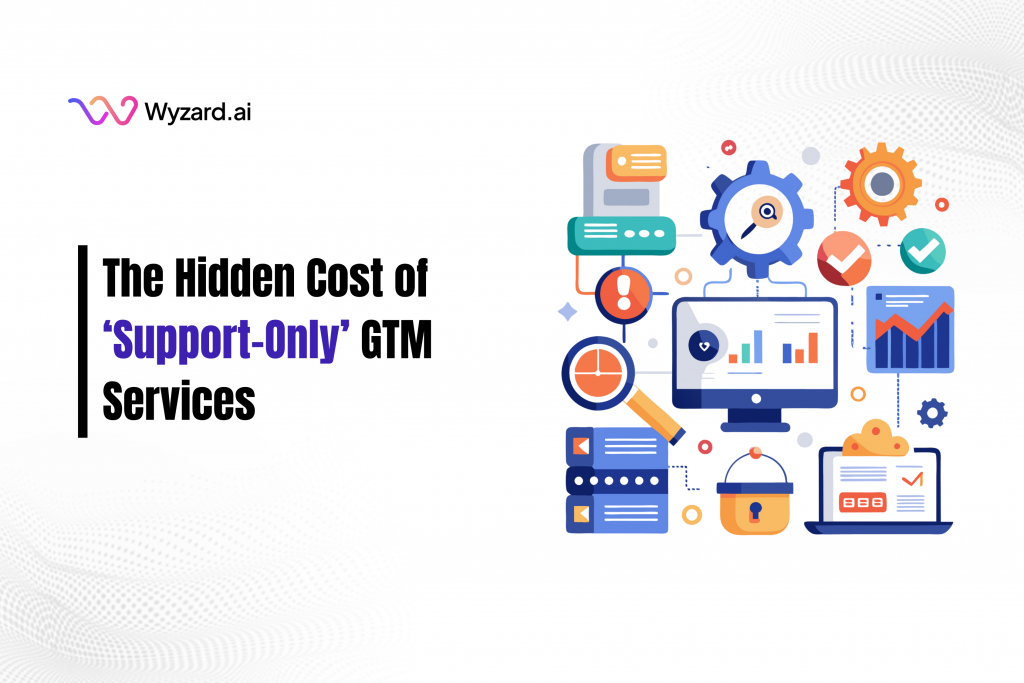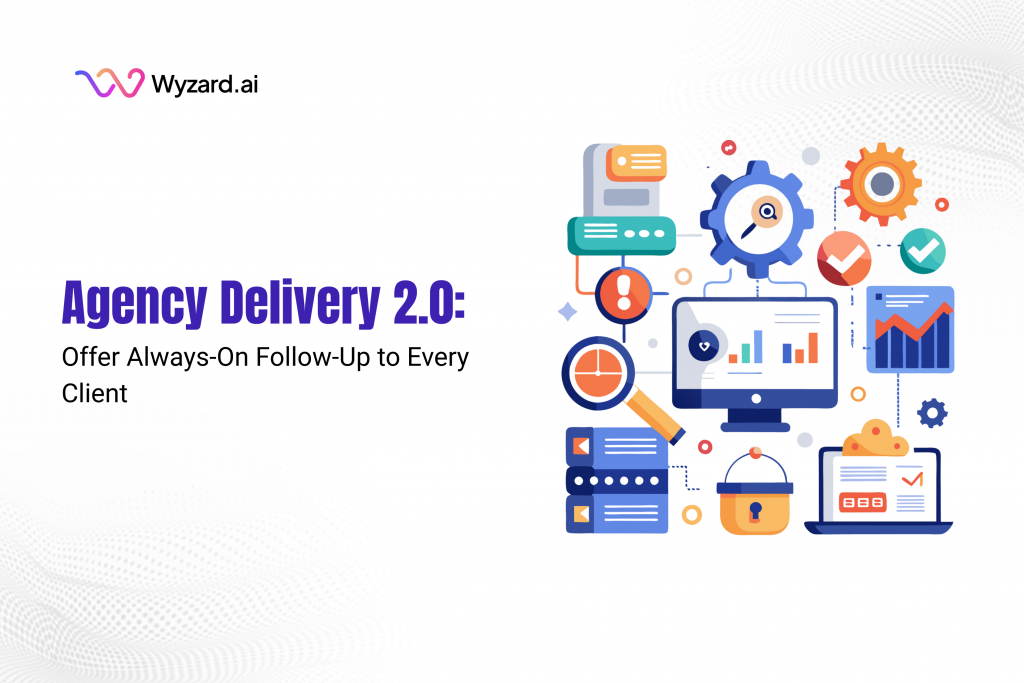A CMO signs a new GTM contract with high expectations. The tools look strong. The roadmap feels solid. The ...

Subscribe Now
Your best prospect just spent 45 minutes researching your competitor’s pricing page, downloaded three comparison guides, and visited your website twice in the past week. Your sales team has no idea.
Meanwhile, your SDRs are cold-calling companies that have shown zero buying signals as high-intent prospects slip away to competitors who actually pay attention to digital behavior patterns.
Intent data reveals which companies are actively researching solutions like yours right now. Yet most B2B teams still rely on outdated lead scoring methods that miss the most obvious buying signals hiding in plain sight.
60 Second Summary
Intent data captures digital behavioral signals that indicate purchase readiness. Here’s what B2B teams need to know:
The Three Types of Intent Data:
- First-party data – Gold from your own website, emails, and content engagement
- Second-party data – Shared insights from trusted partners and integrations
- Third-party data – External signals from review sites, publishers, and intent networks
Making Intent Data Work:
- Combine multiple sources for complete buyer visibility
- Build intelligent scoring systems that spotlight your hottest prospects
- Integrate signals with CRM data to create rich prospect profiles
How Top Teams Use Intent Signals:
Sales teams win by:
- Identifying in-market leads before competitors
- Perfecting their outreach timing
- Qualifying prospects with actual buying intent
Marketing teams excel through:
- Laser-focused account-based campaigns
- Content that speaks to specific buyer needs
- Budget allocation to high-intent accounts
Choose quality data providers, maintain compliance standards, and ensure both teams define “high intent” the same way. When everyone agrees on which signals predict revenue, magic happens.
Book a demo and convert behavioral signals into qualified pipelines automatically.
What is Intent Data?
Intent data is behavioral information that reveals when prospects are actively researching solutions in your category. Unlike demographic data that describes who someone is, intent data shows what someone is doing right now that indicates purchase readiness.
For example, think of intent data as your prospect’s digital body language. While demographic data tells you someone’s a “VP at a 500-person SaaS company,” intent data reveals they just spent 20 minutes on your pricing page at 11 PM on a Sunday. That’s the difference between knowing who they are and understanding they’re desperately seeking a solution.
Modern B2B intent data captures digital footprints across websites, content consumption, search behavior, and social media interactions. When a prospect visits pricing pages multiple times, downloads competitor comparisons, or engages with solution-focused content, these actions signal genuine buying interest that traditional lead scoring methods often miss completely.
The Role of Intent Data in B2B Sales and Marketing
Intent data bridges the gap between marketing activities and sales outcomes by identifying prospects who are actually in the market rather than just demographically qualified. Marketing teams use intent signals to target campaigns more precisely while sales teams focus efforts on prospects showing genuine buying behavior.
Traditional lead scoring relies heavily on firmographic data like company size and industry. B2B intent data adds behavioral context that reveals which prospects are actively evaluating solutions versus those who might buy someday. This behavioral intelligence enables both teams to prioritize efforts on opportunities with highest conversion probability.
Types of Intent Data
Understanding different intent data sources helps teams build comprehensive intelligence about prospect behavior and buying readiness signals.
First-Party Intent Data
First-party intent data comes directly from your own digital properties including website analytics, email engagement, content downloads, and product usage patterns. This data provides the highest quality insights because it reflects actual prospect behavior with your brand and solutions.
Website behavior tracking reveals which pages prospects visit most frequently, how long they spend researching specific topics, and what content resonates with their interests. Email engagement data shows which messages prospects open, click, and forward to colleagues, indicating growing internal interest and potential stakeholder involvement.
Second-Party Intent Data
Second-party B2B intent data comes from partners, vendors, or other companies that share prospect intelligence through formal partnerships or data exchange agreements. Technology vendors often share intent signals about prospects researching complementary solutions.
Partner networks, industry associations, and technology ecosystems frequently provide second-party data that reveals prospect research activities across related solution categories. This expanded view helps teams understand broader technology evaluation projects that might include your solution.
Third-Party Intent Data
Third-party intent data providers aggregate behavioral signals from content networks, websites, and digital properties to identify prospects researching specific solution categories. These providers typically offer the broadest market coverage but with less specific insights about individual prospect interests.
Commercial intent data platforms like Bombora, 6sense, and TechTarget analyze content consumption patterns across thousands of websites to identify companies showing interest in specific technology categories or business solutions.
Search Intent Data
Search intent data captures keyword research patterns that reveal what prospects are actively looking for online. Search behavior often indicates where prospects are in their buying journey, from early problem identification to vendor comparison and final selection.
Search intent analysis helps teams understand the specific terminology, questions, and concerns prospects have about solutions in your category. These insights inform content creation, SEO strategies, and sales conversation preparation.
Engagement Data
Engagement intent data measures how prospects interact with your content, emails, social media, and other touchpoints. High engagement levels often correlate with increased buying interest and internal advocacy for your solution.
Content engagement patterns reveal which topics generate most interest, what formats prospects prefer, and how their consumption behavior changes over time. Progressive engagement increases often signal advancing buying processes and growing internal momentum.
Firmographic and Technographic Data
Firmographic and technographic B2B intent data reveals changes in prospect company characteristics that might indicate solution needs. New funding rounds, technology implementations, or organizational changes often create buying opportunities for related solutions.
Technology stack changes, vendor replacements, and new tool implementations frequently signal expansion opportunities or competitive vulnerabilities that sales teams can address strategically.
Benefits of B2B Intent Data
Intent data delivers measurable improvements across key revenue generation metrics when implemented strategically within existing sales and marketing processes.
#1 Increased Conversion Rates
B2B intent data helps teams focus on prospects showing genuine buying signals rather than just demographic qualifications. Higher-intent prospects typically convert at significantly better rates because they’ve already begun internal evaluation processes.
Sales teams report improved conversion rates when they prioritize prospects exhibiting strong intent signals over cold leads that merely fit ideal customer profiles. The behavioral context helps sales reps tailor conversations to prospects’ actual interests and research focus.
#2 Better Lead Prioritization
Intent data enables more sophisticated lead scoring that combines demographic fit with behavioral readiness indicators. Sales development teams can prioritize outreach based on both ideal customer characteristics and active buying signals.
Lead prioritization improvements help sales teams maximize their time investment by focusing on opportunities with the highest probability of near-term conversion. SDRs waste less effort on prospects who aren’t actively evaluating solutions.
#3 Optimized Marketing Budget and ROI
Here’s what every CMO dreams about, slashing customer acquisition costs (CAC) by 40% or more. Intent data makes it real by eliminating the budget black hole of targeting cold prospects. Instead of burning cash on people “just browsing,” you invest in accounts actively evaluating solutions.
ABM campaigns powered by intent signals deliver 3x better ROI than firmographic targeting alone. Modern platforms automatically shift spend toward high-intent accounts in real-time, turning your marketing budget into a precision instrument rather than a spray-and-pray expense.
Marketing automation platforms integrated with B2B intent data can automatically adjust campaign targeting based on real-time behavioral signals, improving overall campaign efficiency and cost-effectiveness.
#4 Enhanced Customer Retention and Upselling
Intent data helps customer success teams identify existing customers who might be evaluating alternatives or expanding their technology needs. Early warning signals enable proactive retention efforts before customers actually churn.
Expansion opportunities become more visible when customer success teams monitor intent signals related to complementary solutions or increased usage patterns that suggest growing needs.
#5 Competitive Advantage
Intent data provides insights into prospect evaluation processes that competitors might miss entirely. Teams using behavioral intelligence can engage prospects earlier and more relevantly than competitors relying solely on traditional lead generation methods.
Competitive intelligence gathered through intent data reveals which prospects are evaluating alternatives, enabling more strategic positioning and objection handling during sales processes.
#6 Sales and Marketing Alignment
B2B intent data creates shared visibility into prospect behavior that helps align sales and marketing teams around qualified opportunities. Both teams can see the same behavioral signals and coordinate their efforts more effectively.
Marketing and sales alignment improves when teams share common definitions of qualified leads based on intent signals rather than just demographic characteristics.
How to Use Intent Data for B2B Sales
Sales teams leverage intent data to identify opportunities, prioritize outreach, and personalize conversations based on prospect behavior patterns and research interests.
Step #1, Identify In-Market Leads
Intent data reveals which prospects are actively researching solutions in your category, enabling sales teams to focus on companies with genuine near-term buying potential rather than cold prospects.
Sales development representatives can use intent signals to build target lists of prospects who’ve demonstrated recent solution research activity. These warm leads typically respond better to outreach because they’re already familiar with solution categories and potential benefits.
Step #2, Improve Lead Scoring and Qualification
B2B intent data enhances traditional lead scoring by adding behavioral context to demographic qualifications. Prospects showing strong intent signals deserve higher priority regardless of company size or industry characteristics.
Smart lead qualification systems combine intent data with existing CRM information to create comprehensive prospect profiles that guide prioritization and outreach strategies.
Step #3, Get Early Access to Buying Cycles
Intent data helps sales teams identify prospects who are beginning evaluation processes before they’re ready for direct sales conversations. Early engagement enables relationship building and preference establishment.
Prospects showing initial research behavior often welcome educational content and thought leadership rather than direct sales pitches. Sales teams can provide value early in buying cycles and build trust before competitive evaluation begins.
Step #4, Add Context to Cold Outreach
Intent data provides conversation starters and personalization opportunities that make cold outreach more relevant and engaging. Sales reps can reference specific content prospects have consumed or research topics they’ve explored.
For example, prospect reads two blogs about integration headaches? Your AI-powered outreach automatically highlights your plug-and-play connectors. They’ve been comparing pricing models? Reference your transparent pricing structure. This behavioral intelligence turns generic pitches into personalized conversations that actually get responses.
Outreach messages that acknowledge prospect research interests and offer relevant insights typically generate higher response rates than generic cold emails or phone calls.
Step #5, Reduce Churn and Identify Upsell Opportunities
Existing customer intent data reveals changing needs, competitive research, or expansion interests that indicate retention risks or growth opportunities. Customer success teams can intervene proactively based on behavioral signals.
Intent monitoring helps identify customers who might be evaluating alternatives or researching additional solutions that could expand their relationship with your company.
Step #6, Execute Competitive Plays
Intent data reveals when prospects are researching specific competitors, enabling strategic positioning and competitive battle cards that address likely comparison criteria and objections.
Sales teams can prepare competitive responses based on actual prospect research behavior rather than assuming what alternatives prospects might consider.
How to Use Intent Data for B2B Marketing
Marketing teams use intent data to target campaigns, personalize content, and optimize budget allocation based on genuine buying signals rather than demographic assumptions alone.
#1 Build Targeted ABM Campaigns
Account-based marketing campaigns perform significantly better when targeted using B2B intent data that reveals which accounts are actively researching solutions. ABM resources focus on prospects showing genuine buying signals.
Intent-driven ABM campaigns can target specific accounts based on research behavior, enabling personalized messaging that references their actual interests and evaluation criteria.
#2 Create LinkedIn-Matched Audiences
Intent data enables more precise LinkedIn advertising by targeting prospects who’ve demonstrated solution research behavior. Social media campaigns reach prospects who are already familiar with solution categories and benefits.
LinkedIn matched audiences built using intent signals typically achieve higher engagement rates and better conversion metrics than audiences based solely on job titles or company characteristics.
#3 Improve Targeting and Personalization
Intent data provides behavioral context that enables more relevant targeting across all marketing channels. Email campaigns, content recommendations, and website personalization can reflect prospect interests and research focus.
Personalized marketing experiences based on intent signals often generate higher engagement rates because content matches what prospects are actually researching and considering.
#4 Optimize Website Content and User Experience
Website optimization based on intent data ensures that high-intent visitors find relevant content quickly. Landing pages, navigation, and content recommendations can reflect common research patterns and interests.
Prospects arriving with strong intent signals deserve optimized experiences that address their likely questions and concerns without requiring extensive navigation or form completion.
#5 Develop Content That Matches Buyer Interests
Content strategy informed by B2B intent data focuses on topics that prospects are actively researching rather than assumptions about what might interest them. Content performance improves when it addresses actual prospect needs.
Content marketing strategies based on intent research ensure that blog posts, whitepapers, and case studies address questions prospects actually have during their evaluation processes.
10 Powerful Intent Data Strategies
Strategic intent data implementation requires coordinated approaches that combine behavioral intelligence with existing sales and marketing processes.
Strategy 1: Account-Based Marketing Optimization
Use intent data to identify target accounts showing solution research behavior, then coordinate personalized campaigns across multiple touchpoints. ABM effectiveness improves dramatically when targeting is based on actual buying signals.
Focus ABM resources on accounts demonstrating multiple intent signals rather than spreading efforts across large target lists based solely on firmographic qualifications.
Strategy 2: Personalized Content Creation
Develop content that addresses specific research topics and questions revealed through B2B intent data analysis. Prospects respond better to content that matches their actual interests and evaluation criteria.
Create content clusters around intent themes that guide prospects through logical research progressions from problem identification to solution evaluation.
Strategy 3: Timing Optimization for Outreach
Intent data reveals optimal timing for sales outreach based on prospect research patterns and engagement levels. Contact prospects when their interest is highest rather than following arbitrary cadence schedules.
Intent data shows when prospects hit peak interest, but humans can’t monitor 24/7. That’s where AI-triggered outreach shines. When intent signals spike at 2 AM, your automated system fires personalized messages instantly, not Monday morning when three competitors have already called.
Combine real-time signal monitoring with AI-powered engagement to slash response lag from days to minutes. While competitors schedule follow-ups, your prospects get contextual outreach the moment their research intensifies.
Strategy 4: Competitive Intelligence
Track prospect research behavior related to competitors to understand evaluation criteria, positioning challenges, and competitive vulnerabilities. Competitive intent data informs battle cards and sales positioning.
Identify prospects researching multiple vendors simultaneously to prioritize competitive opportunities and prepare strategic responses to likely objections.
Strategy 5: Lead Nurturing Enhancement
Design nurturing campaigns that respond to specific intent data signals rather than time-based sequences. Behavioral triggers enable more relevant and timely prospect engagement.
Nurturing effectiveness improves when content delivery responds to prospect research behavior rather than assuming linear progression through predefined sequences.
Strategy 6: Sales Territory Planning
Intent data helps sales leadership allocate territory resources based on actual market demand rather than geographic or demographic assumptions. Focus sales capacity where intent signals indicate genuine opportunities.
Territory optimization using intent intelligence ensures that sales resources align with market demand patterns and prospect research activity.
Strategy 7: Event and Webinar Targeting
Use B2B intent data to identify prospects who would benefit most from educational events, product demos, or industry webinars. Event attendance improves when targeting reflects actual prospect interests.
Event marketing campaigns targeted using intent signals typically achieve higher registration rates and better attendee engagement because content matches research interests.
Strategy 8: Customer Expansion Identification
Monitor existing customer intent data to identify expansion opportunities or competitive threats. Customer success teams can proactively address changing needs before they impact retention.
Intent monitoring reveals when customers are researching additional solutions or evaluating alternatives, enabling proactive intervention and expansion conversations.
Strategy 9: Partner and Channel Optimization
Intent data helps identify prospects who might benefit from partner solutions or channel partner engagement. Channel programs become more effective when based on actual prospect needs.
Partner referral programs perform better when based on intent intelligence that reveals prospect research interests and solution requirements.
Strategy 10: Campaign Performance Improvement
Analyze intent data patterns to understand which campaigns generate genuine buying interest versus mere engagement. Campaign optimization focuses on activities that drive actual sales pipeline.
Marketing campaign effectiveness improves when success metrics include intent signal generation rather than just traffic, downloads, or engagement rates.
Where to Get Intent Data
Intent data sources vary significantly in quality, coverage, and integration capabilities. Choose providers based on your specific use cases and existing technology infrastructure.
Intent Data Providers and Platforms
Commercial providers like Bombora, 6sense, TechTarget, and ZoomInfo offer valuable third-party insights, but the real power comes from unifying these external signals with your first-party data. Evaluate platforms on integration capabilities, those that seamlessly blend multiple sources deliver the complete buyer picture.
Enterprise revenue platforms now understand this, combining third-party behavioral signals with your website data, creating unified intelligence that neither source provides alone.
Co-op Intent Data Networks
Co-operative intent networks enable companies to share anonymized prospect research data in exchange for broader market intelligence. Co-op models often provide more comprehensive coverage than individual provider networks.
Industry associations and technology ecosystems frequently offer co-operative intent sharing programs that benefit all participants through expanded market visibility.
Bidstream Intent Data Sources
Bidstream intent data captures prospect research behavior through programmatic advertising networks. Real-time bidding platforms provide behavioral signals based on content consumption and website visitation patterns.
Bidstream sources offer broad coverage but typically require more sophisticated analysis to extract actionable insights about specific prospect interests and buying readiness.
First-Party Data Collection Methods
Internal intent data collection requires proper website analytics, email tracking, and content engagement measurement. Marketing automation platforms typically include intent signal capture and analysis capabilities.
Marketing automation systems can track prospect behavior across email, website, and content interactions to build comprehensive first-party intent profiles.
Best Practices and Common Mistakes
Successful intent data implementation requires careful attention to data quality, privacy compliance, and team alignment around shared definitions and processes.
Data Quality and Compliance Considerations
B2B intent data quality varies significantly between providers and data sources. Validate intent signals against known prospect behavior to ensure accuracy and relevance for your specific market and solution category.
Data freshness and signal strength matter more than volume for most use cases. Focus on high-quality intent indicators rather than attempting to capture every possible behavioral signal.
GDPR and Privacy Requirements
Intent data collection and usage must comply with privacy regulations including GDPR, CCPA, and industry-specific requirements. Ensure that data providers maintain proper consent and opt-out procedures.
Privacy compliance affects both data collection methods and usage restrictions. Work with legal teams to establish proper data handling and prospect communication policies.
Common Implementation Mistakes to Avoid
Avoid treating intent data as a replacement for existing qualification processes rather than an enhancement. Behavioral signals should supplement, not replace, traditional lead scoring and sales processes.
Integration challenges often arise when teams attempt to implement intent data without proper CRM integration or team training. Start with simple use cases before expanding to complex automation workflows.
Measuring Success and ROI
Intent data ROI measurement requires tracking improvements in conversion rates, sales cycle length, and lead quality rather than just engagement metrics. Focus on revenue impact rather than activity increases.
Success metrics should include pipeline quality improvements, sales team efficiency gains, and marketing campaign optimization results that can be directly attributed to intent intelligence.
Getting Started with Intent Data
Intent data implementation success depends on careful provider selection, phased rollout, and team alignment around shared processes and definitions.
Choosing the Right Intent Data Solution
Evaluate B2B intent data providers based on data coverage for your target market, integration capabilities with existing systems, and support for your specific use cases. Consider starting with limited pilot programs before full implementation.
Data provider evaluation should include coverage quality, signal accuracy, integration complexity, and ongoing support requirements. Choose providers that align with your existing technology stack and team capabilities.
Implementation Roadmap
Intent data implementation should follow a phased approach starting with simple use cases like lead prioritization before expanding to complex automation and personalization scenarios.
- Start with first-party data collection and analysis to establish baseline behavior patterns
- Add third-party intent data for broader market coverage and competitive intelligence
- Integrate intent signals with existing CRM and marketing automation systems
- Train sales and marketing teams on intent signal interpretation and usage
- Expand to advanced use cases like predictive analytics and automated responses
Team Alignment and Training
Successful intent data programs require alignment between sales, marketing, and customer success teams around shared definitions of intent signals and appropriate response protocols.
Team training should focus on intent signal interpretation, appropriate response timing, and integration with existing sales and marketing processes. Regular reviews help optimize usage patterns and identify improvement opportunities.
Convert Intent Data Into Revenue with AI-Powered Engagement
Manual prospect research, email crafting, and follow-up coordination take too long when prospects are actively evaluating alternatives.
Modern buyers expect immediate responses to their research activities and demonstrated interest. Intent data reveals when prospects are ready to engage, but human teams cannot respond fast enough to capitalize on these windows of opportunity.
AI-powered marketing copilots bridge this gap by automatically engaging high-intent prospects the moment they demonstrate buying signals. Instead of waiting for manual follow-up processes, intelligent systems respond immediately with relevant, personalized interactions that match prospect research interests.
Book a demo and see how AI-powered engagement converts behavioral signals into qualified pipeline automatically.
With Wyzard’s Marketing Copilot, your intent data investments transform from passive intelligence into active revenue generation. The AI continuously monitors prospect behavior, identifies intent signals, and engages immediately with relevant conversations that qualify interest and book meetings automatically.
Your sales team receives pre-qualified prospects who’ve already been educated and prepared for productive conversations. Marketing campaigns become more effective because AI engagement captures high-intent moments that human processes typically miss.
FAQ
First-party intent data comes directly from your own website, emails, and content interactions, providing the most accurate insights about prospect behavior with your brand. Third-party intent data is collected from external sources and content networks, offering broader market coverage but less specific insights about individual prospect interests.
B2B intent data accuracy varies significantly between providers and data sources. First-party data typically offers 85-95% accuracy since it reflects actual prospect behavior on your properties. Third-party intent data accuracy ranges from 60-80% depending on data collection methods and signal validation processes.
Intent data pricing typically starts around $2,000-5,000 monthly for basic third-party solutions and can reach $15,000-50,000 monthly for enterprise platforms with comprehensive coverage. First-party intent data collection through existing marketing automation platforms often requires no additional costs beyond current tool subscriptions.
Measure intent data ROI by tracking improvements in lead conversion rates, sales cycle length reduction, and marketing campaign efficiency. Focus on pipeline quality improvements and revenue attribution rather than just engagement metrics. Successful implementations typically show 20-40% improvements in qualified lead generation within six months.
Leading B2B intent data providers include Bombora, 6sense, ZoomInfo, TechTarget, and Demandbase. Choose providers based on your target market coverage, integration capabilities with existing systems, and specific use cases. Most businesses benefit from combining first-party data collection with one comprehensive third-party provider.
Small businesses can leverage intent data effectively by starting with first-party data collection through website analytics and email engagement tracking. Many marketing automation platforms include basic intent data capabilities that small teams can implement without significant additional investment or complex integration requirements.
Other blogs
The latest industry news, interviews, technologies, and resources.
The Hidden Cost of GTM Execution: Why GTM execution gaps Stall Revenue
A CMO approves a GTM initiative that looks solid on paper. The tools are live. The workflows exist. Support ...

Agency Delivery 2.0: Offer Always-On Follow-Up to Every Client
Most agencies are great at launching campaigns. The kickoff is sharp, the messaging is solid, and early results look ...

 We’ve secured funding to power Signal-to-Revenue AI to GTM teams globally. →
We’ve secured funding to power Signal-to-Revenue AI to GTM teams globally. →


